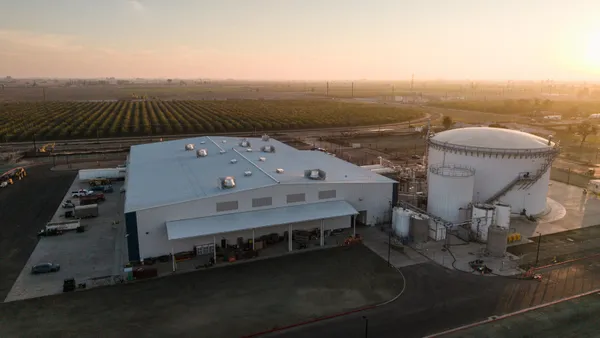UPDATE, July 24: New Jersey Governor Chris Christie signed S-3027 into law on July 21, establishing a statewide goal to reduce food waste 50% by 2030, as reported by NJ Spotlight. The state Department of Environmental Protection now has one year to develop and roll out a reduction plan.
Other statewide food waste bills, including one to revise food date labeling and another to encourage food donation, are still pending.
UPDATE, June 1: The New Jersey Senate recently voted to approve a package of three food waste reduction bills, according to a press release from Senate Democrats.
This package includes the establishment of a state goal to reduce food waste 50% by 2030 (S-3027); voluntary guidelines for food donation from schools and higher education institutions (S-2360/3030); and the expansion of liability protection for donations made directly to individuals (S-3026).
The bills had received committee approval earlier this year and their fates will now rest with the state Assembly. Though even if passed there, their prospects remain uncertain during the remainder of Governor Chris Christie's term.
Three additional food waste-related bills have received approval from the Senate Environment and Energy Committee and are under consideration for a vote by the full Senate. These include tax deductions for food donations, the standardization of date labels and a diversion requirement for large generators.
Dive Brief:
- The New Jersey Senate's Environment and Energy Committee voted to pass a package of food waste reduction bills on March 14. Among those bills is one that would set a goal to reduce the amount of food waste in the state 50% by 2030, as reported by NJ Spotlight.
- Another bill would establish a standardized date labeling system for manufacturers and retailers. The preferred terminology would be an "elevated-risk date" and a "quality date." The bill would also establish a public education program around the change.
- The three other bills focus on food donation. One would expand tax deductions for donations from business inventory, another would extend liability protections to schools and higher education institutions, and another would clarify existing liability protections for all donors.
Dive Insight:
Last fall, this committee also passed a related bill that would have required large commercial generators to divert organic waste. That bill hasn't seen any movement since and one of its sponsors is behind multiple pieces of legislation in this current package. The new approach of setting a goal to cut food waste in half by 2030 — directly inspired by the 2015 national goal — could have larger results, but will be harder to achieve than a commercial diversion requirement. Aside from a requirement for the state's Department of Environmental Protection and Department of Agriculture to develop a plan within a year the bill offers few details on how this goal would be achieved.
The other bills on date labeling and donations could deliver smaller yet more immediate results. Multiple food industry trade groups now support date label standardization, indicating the potential for collaboration in New Jersey at the state level. Updating state liability guidelines set by the Bill Emerson Good Samaritan Donation Act is also a priority but includes more complex factors and differences of opinion. Work by the Harvard Food Law and Policy Clinic is cited multiple times in these bills so it's clear that New Jersey legislators are following the national conversation. If passed by Congress, the Food Donation Act of 2017 would deliver many of the same results that they're after, but codifying them on the state level will also be important.
The details of these bills, or the prior commercial diversion bill, could still change during the legislative process and some type of combination may be possible. When it comes to implementing a statewide organic waste diversion goal New Jersey could see more concrete results by emulating some its Northeastern counterparts. New York is considering its own plan and states such as Vermont and Massachusetts have already begun to see results on organics diversion by using specific criteria and benchmarks rather than broad long-term goals.













